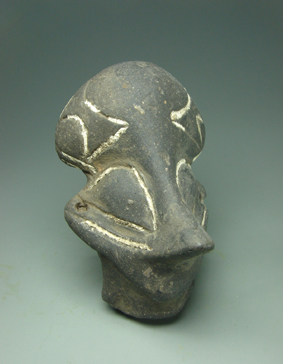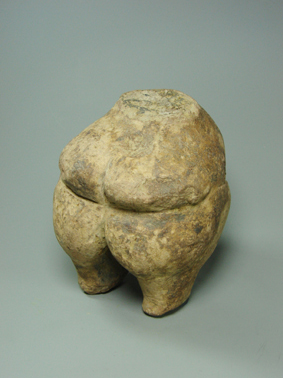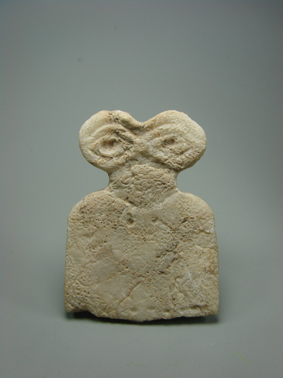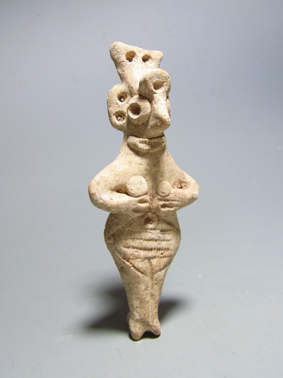The Human Condition 2009
RESPECT: Idols of our Ancestorsnovember 21 - december 19, 2009 taguchi fine art, ltd. |
|

Terracotta masked Head in shape of a Duck The Valcans, Vinca culture, late 5th millennium BC 
Terracotta Torso of Mother Goddess Greece, Neolithic Period, ca. 5000-3000 BC 
Alabaster Eye Idol Tell el Brak region, Syria, 4th millennium BC 
Terracotta Mother Goddess Northern Syria, 2nd millennium BC |
This exhibition is the second in our continuing series which seeks to explore "The Human Condition", introducing art works produced by a serious desire of the human essential root, without considering about the times and the area. Following its first exhibition "Jaguar's Children: The Art of Olmec", we present ancient mother goddesses and idols at its second exhibition. The mother goddesses and idols on view were created in lands contiguous to one another and include from West to East, from Italy, Greece, Balkan Peninsula, Anatolia (Turkey), Syria, Iraq, to the Indus Valley, extending over about13% of the earth surface. The earliest were created during the Neolithic Period about six thousand years ago and most recent examples are dated to the first half of the first millennium BC. Since they were found by excavation, few are in their complete form and most are lacking some parts as head or arms. There are some which were simply joined those broken pieces together during, or just after the excavation with unskilled technique. It would be possible enough to restore not to be able to be identified, using current developed technology. However, such restoration is not done to most of the works on view this time. This idea is based on the respect for the history that these idols traced, the respect for the thought of people who concerned with them, and the respect for the chain of the feeling of the people who feel spirituality in these clay idols or stone statues, and value old things, even if they are broken. More than 50 pieces of mother goddesses and idols from Anatolia, clay figures from Thessaly in Greece etc. will be exhibited, being for sale individually. Usually it is very difficult to have a look of these works except in major museums in the West. So this is a very rare opportunity to see these treasure from the ancient times so closely. We are looking forward to your visit. |